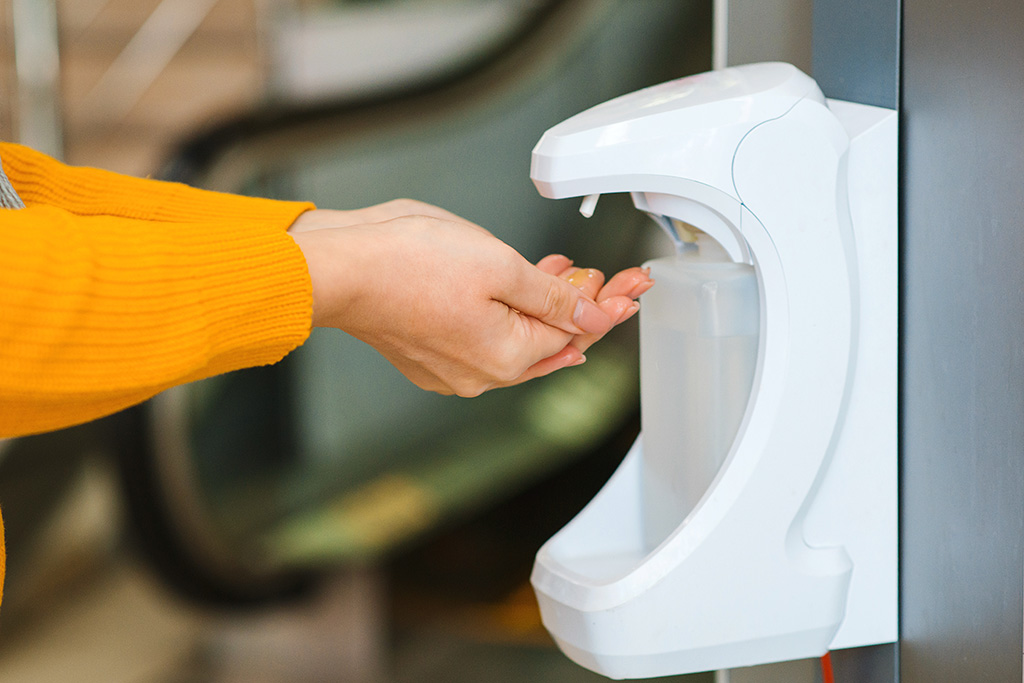Safe Storage of Alcohol Based Hand Sanitiser
Reduce the Risk of Fires with Safe Storage of Alcohol Based Hand Sanitisers
Q: What are the fire hazards relating to alcohol-based hand rub?
A: All alcohol-based products are potentially flammable and therefore they should be stored away from high temperatures and flames. The WHO suggests that all health-care organisations currently using alcohol-based hand sanitiser should undertake local risk assessments.
The benefits of the alcohol in terms of infection prevention far outweigh the fire risks . A study in Infection Control and Hospital Epidemiology (Kramer et al 2007) found that hand rubs have been used in many hospitals for decades, representing an estimated total of 25,038 hospital years of use. The median consumption was between 31 L/month (smallest hospitals) and 450 L/month (largest hospitals), resulting in an overall consumption of 35 million L for all hospitals. A total of 7 non-severe fire incidents were reported. No reports of fire caused by static electricity or other factors were received, nor were any related to storage areas.
Q: What can be done to minimise fire risks?
A: The control of fire risks requires a co-ordinated approach by fire officers, fire safety advisors, risk managers, health & safety, and infection control professionals, and involves the risk assessment of points of use and storage, as well as general safety requirements. Risk assessments should be carried out on the use of alcohol hand sanitisers, the location of dispensers, the storage of stock and the disposal of used containers/dispensers and expired stock, giving consideration to the risks of fire.
Allow the hand sanitiser to dry: Staff should be advised to let their hands dry and the vapours disperse after using alcohol hand sanitiser, which minimises these risks. The How to Hand sanitiser posters state clearly: “once dry, your hands are safe”
Storage
In order to avoid running out of hand sanitiser, ward areas and clinical units may hold reserve stock locally.
- Local and central (bulk) storage must comply with fire regulations regarding the type of cabinet and store, respectively.
- Production and storage facilities should ideally be air-conditioned or cool rooms.
- No open flames or smoking should be permitted in these areas.
- The WHO–recommended formulation hand sanitiser should not be produced in quantities exceeding 50 L locally, or in central pharmacies lacking specialized air conditioning and ventilation.
- Since undiluted ethanol is highly flammable and may ignite at temperatures as low as 10oC, production facilities should directly dilute it to the concentrations outlined in the Guide.
- The flash points of ethanol 80% (v/v) and isopropyl alcohol 75% (v/v) are 17.5°C and 19°C, respectively.
- National safety guidelines and local legal requirements must be adhered to, in regard to the storage of ingredients and the final product.
- Care should be taken when carrying personal containers/dispensers to avoid spillage onto clothing, bedding, or curtains, and in pockets, bags or vehicles.
- Containers / dispensers should be stored in a cool place, and care should be taken regarding the securing of tops / lids.
- The quantity of hand sanitiser kept in a ward or department should be as small as is reasonably practicable for day-to-day purposes.
- A designated ‘Highly Flammables’ store will be required for situations where it is necessary to store more than 50 L (e.g. central bulk storage).
- Containers and dispenser cartridges containing hand sanitiser should be stored in a cool place away from sources of ignition. This also applies to used containers that have not been rinsed with water.
Disposal issues
- Used containers and dispensers will contain gel residues and flammable vapours.
- Rinsing out used containers with large quantities of cold water will reduce the risk of fire and the containers may then be recycled or disposed of in general waste.
Location of dispensers
- Hand sanitiser dispensers should not be placed above or close to potential sources of ignition, such as light switches and electrical outlets, or next to oxygen or other medical gas outlets, due to the increased risk of vapours igniting.
- Hand sanitiser dispensers should not be sited in any corridor that forms part of a means of escape (i.e. outside the ward). Fire Safety Advisors may need to be consulted. If dispensers are placed in a circulation area within a ward (e.g. outside bedded areas) it is recommended that they are at least 1.2 metres apart, the circulation area is at least 2 metres wide and the maximum container size is 1 litre.
- The siting of hand sanitiser dispensers above carpets is not recommended due to the risk of damage and lifting/warping of carpets.
- Consideration should be given to the risks associated with spillage onto floor coverings, including the risk of pedestrian slips.
- This advice is based on a Fire Modelling Analysis Report prepared for the American Society for Healthcare Engineering (ASHE) in the US in 2003.
- Regions should check with local regulatory agencies for specific guidelines.
Patients and visitors
- Clear instructions for use should be displayed at hand sanitiser dispenser points intended for use by visitors to clinical areas.
- These should include warnings not to use excessive amounts, and not to smoke immediately after use.
Spillages
- Significant spillages should be dealt with immediately by removing all sources of ignition, ventilating the area and diluting with water (to at least ten times the volume).
- The fluid should then be absorbed by an inert material such as dry sand (not a combustible material such as sawdust) which should then be disposed of in a chemical waste container.
- Vapours should be dispersed by ventilating the room (or vehicle) and the contaminated item should be put in a plastic bag until it can be washed and/or dried safely.
N.B. Fighting a large (i.e. bulk storage) alcohol fire using water or aqueous (water) film-forming foam (AFFF) extinguishers may be ineffective and may spread the fire over a larger area rather than

